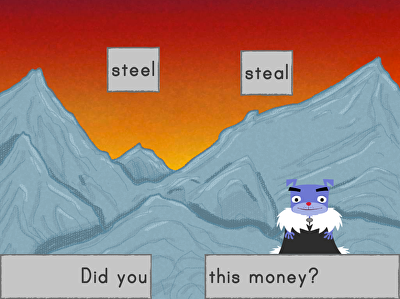One thing that is very exciting about a future career in teaching primary/junior grades is the idea that I can decorate the walls with fun colours and displays! I see videos all the time of teachers decorate their white boards with a calendar, daily schedule, assignment due dates, etc., but they make it look so intriguing. However, sometimes all the displays on the wall can actually overwhelm the students. Maybe there is too much information or too many colours and can act as a distraction. I wanted to look at the dos and don'ts of wall displays in classrooms, and how we can use them to motivate the students to learn.

While many teachers actually have good intentions with their wall displays, they often act as a distraction, or even sensory overload for the students. Having a surplus of information about course content can make the students feel like they are overwhelmed with work and could impede on the students' learning abilities rather than help keep them organized. Classrooms should not be plain and boring because that does not help to facilitate learning either, but they should not contain too much visual stimulus where they may feel they have a difficult time ignoring it to do their work.
The best way to decorate rooms is to display student work, avoid clutter, include visual aids, avoid displaying student scores/grades, and to let in natural light. We have learned through our classes that it is very beneficial to the students to display their work, as it will allow them to feel a sense of accomplishment and motivate them to continue performing at their best. They are also more likely to remember the material when they are constantly reminded of it. Additionally, you should always keep at least 20% of the walls clear so it does not seem too cluttered and distracting. Too much on the walls contributes to disorganization and overwhelms the students. Instead, you may choose to continuously swap out decorations and displays monthly to keep it fresh and motivational. Visual aids (i.e., anchor charts, maps, and diagrams) are okay to use, but also may prove to be distracting for the students. These can be put up after a lesson to reinforce learning but may need to be taken down after they are no longer helpful. Finally, letting in natural light gets the students awake, alert and ready to learn, while students who are exposed to classrooms that have the blinds always closed and dim lighting can feel tired or lazier.
This display is personalized to the month and displays important information in a fun and simple way.
This is an example of something that could be put up after a lesson, but may act as a distraction for students if it is left up for long.
This classroom has a lot of good elements, for example, the display of student work, the 'happy birthday wall' and the natural light. However, it is so much display that it would be a huge distraction for the students. The future of teaching has to include different ways to gage the students attention and make it a fun and interesting learning environment. Paying attention to detail and the small things around the classroom is a great way to go about creating this environment.
References
Gabrielli, M. Classroom displays secondary. [Online image]. Pinterest. https://www.pinterest.ca/pin/13862711344654510/?d=t&mt=login
Heavily decorated classrooms disrupt attention and learning in young children. [Online image]. (2014). Association of psychological science. https://www.psychologicalscience.org/news/releases/heavily-decorated-classrooms-disrupt-attention-and-learning-in-young-children.html/comment-page-1
Terada, Y. (2018, October 24). DOS and don'ts of classroom decorations. Edutopia. Retrieved from https://www.edutopia.org/article/dos-and-donts-classroom-decorations.
User5765101582365. [@kschmid4]. (2021, November 1). November is here. #teachersoftiktok
[Video]. TikTok. https://vm.tiktok.com/ZM8HPcyaK/
Courtesy of: SabrinaP@NU
















